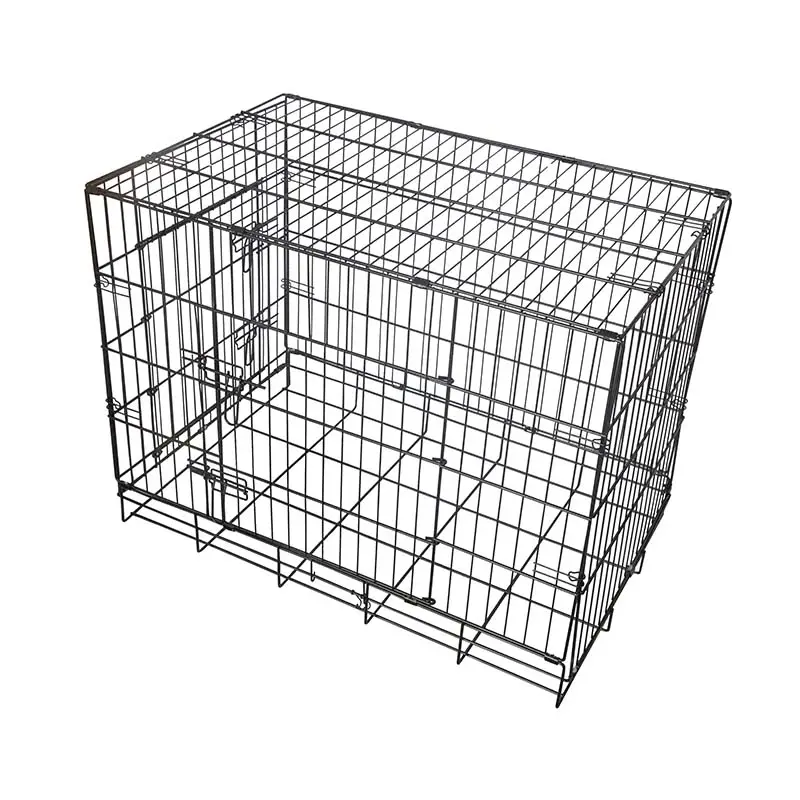Toʻgʻri tanlangan sichqon qoplarini tijorat maqsadlarida foydalanish hayvonlarning bemorligi va tadqiqotlarning amaliy qiymatiga ta'sir qiluvchi bir nechta omillarni e'tibor bilan ko'rib chiqishni talab qiladi. Yangi ob'ekt yaratayotganingizda yoki mavjud infratuzilmani yangilayotganingizda, asosiy baholash me'yorlarini tushunish muvaffaqiyatli uzoq muddatli sarmoyaga yoki xarajatlari katta bo'lgan xatoliklarga olib kelishi mumkin. Zamonaviy sichqonchalarni ushlab turish uchun mo'ljallangan qafaslar ancha rivojlangan, ular ilg'or materiallardan va innovatsion dizayn elementlaridan foydalangan holda hayvonlarning xavfsizligi hamda tadqiqot samaradorligini oshiradi.
Tijorat maqsadlarida foydalanish uchun sichqon qafaslarini baholashda material tarkibi eng muhim jihat hisoblanadi. Yuqori sifatli polikarbonat va polisulfon materiallari tez-tez tozalash jarayonlariga chidamli bo'ladi. Ushbu materiallar yuzlab marta avtoklavda tozalangandan keyin ham mustahkamligini saqlaydi, bu esa uloqtirilgan foydalanish muddati va sarmoyadan yaxshiroq daromad olish imkonini beradi.
Zamonaviy sichqonlar kafeslari yasharish muddati davomida sarg'ayishga va shaffofligini saqlashga chidamli maxsus polimerlardan foydalanadi. Ushbu shaffoflik hayvonlarni bezovta qilmasdan, ularning sog'ligi bo'yicha har kuni tekshiruv o'tkazish va xulq-atvorini kuzatish uchun zarur. Shuningdek, ushbu materiallar tadqiqot natijalariga yoki hayvonlar sog'lig'iga ta'sir qilishi mumkin bo'lgan kimyoviy moddalarning chiqib ketishini oldini oladi.
Sichqonlar kafeslaridagi to'g'ri ventilyatsiya dizayni bevosita hayvonlar sog'lig'i va tadqiqotlarning haqiqiyligiga ta'sir qiladi. Rivojlangan ventilyatsiya tizimlari hayvonlarga shamol ta'sirini oldini olib, bir vaqtning o'zida optimal havo almashish tezligini saqlashi kerak. Eng samarali sichqonlar kafeslari kafes atrofidagi ob-havo muhitida tekis havo oqimi namunasini yaratadigan maqsadli joylashtirilgan ventilyatsiya quvurlariga ega.
Suv o'tkazmaydigan qopqoqlar va ventilyatsiya qilingan polka tizimlari ilonlar uyasining dizayni bilan birgalikda ishlab, mos namlik darajasini saqlash va nihotli ammiakning to'planishini kamaytirishga yordam beradi. Yomon ventilyatsiya nafas olish muammolariga olib kelishi va tadqiqot natijalarini buzishi mumkinligi sababli, bu birlashtirish uzoq muddat saqlash echimlari uchun juda muhim.
Tijorat ob'ektlari hayvonlarning farovonligi bo'yicha qoidalariga rioya qilish bilan birga mavjud bo'shliqni maksimal darajada to'ldirishi kerak. Zamonaviy sichqoncha uylari vertikal foydalanishni optimallashtiruvchi samarali ustma-ust qo'yish tizimlari bilan ishlab chiqilgan. Eng yaxshi tizimlar ilonlar uyasini harakatlantirishga yo'l qo'ymaydigan mustahkam blokirovka mexanizmlariga ega bo'lib, kundalik parvarishlash jarayonida oson kirish imkonini beradi.
Ustma-ust qo'yish imkoniyatini baholashda, ham ustma-ust qo'yilgan konfiguratsiyalarning barqarorligi, ham ilonlar uyasini oson olib tashlash imkoniyatini hisobga oling. Yuqori sifatli sichqoncha uylari har doimiy parvarishlash paytida halokat xavfini kamaytirish va boshqarish paytida zarbani kamaytirish uchun mo'ljallangan ergonomik elementlarni o'z ichiga oladi.
Sichqonlar kafeslarini samarali saqlash va tashish imkoniyati ob'ekt ishlashiga sezilarli ta'sir qiladi. Tozalash davrlarida saqlash maydonini kamaytiruvchi bo'sh holatda bir-biriga joylashtirish imkoniyatini o'z ichiga olgan dizaynlarni qidiring. Harakat davrida xavfsizlikni oshiruvchi maxfiy ushlab turish nuqtalari va muvozanatli og'irlik taqsimoti kabi o'rnatilgan boshqaruv xususiyatlari.
Ilg'or kafes tizimlari odatda transportlash aravalari va saqlash echimlari bilan mos keladi, anjuman ish oqimini soddalashtiruvchi integratsiyalangan tizim yaratadi. Ushbu aksessuarlar asosiy kafes dizaynini qo'llab-quvvatlashi kerak bo'lib, balki chidamlilik standartlarini saqlab qolishi kerak.
Uzoq muddatli tijorat muvaffaqiyati sichqonlar kafeslarini saqlash osonligiga bevosita bog'liq. Yuqori sifatli dizaynlarda axlat to'planishini oldini oladigan va sifatli tozalashni ta'minlaydigan silliq ichki sirt mavjud. Qiyin burchaklarning yoki teshiklarning bo'lmasligi tozalash vaqtini sezilarli darajada kamaytiradi hamda to'liq dezinfektsiyani ta'minlaydi.
Yuqori haroratda yuvish hamda kimyoviy dezinfektsion vositalar kabi qattiq tozalash protokollari bardosh beradigan kafes komponentlarini hisobga oling. Olib tashlanadigan qismlar minimal bo'lishi va tozalash jarayonini soddalashtirish uchun osonlikcha yig'iladigan va ajratiladigan tarzda ishlab chiqilgan bo'lishi kerak.
Tijorat maqsadlar uchun mo'ljallangan sichqon kafeslari sterilizatsiyaning takroriy tsikllaridan keyin ham o'z konstruksion mustahkamligini saqlashi kerak. Yuqori sifatli materiallar avtoklav ta'siri hamda kimyoviy aralashmalar natijasida minimal maydalanish ko'rsatishi kerak. Standart sterilizatsiya protokollarida uzoq muddat foydalanish natijasida isbotlangan chidamlilikka ega mahsulotlarni tanlang.
Eng yaxshi kafes tizimlari keng foydalanishdan keyin ham o'lchamlarining barqarorligi va germetiklik xususiyatini saqlaydi. Bu kafeslar orasida to'siq sharoitini saqlash va kesishib ifloslanishni oldini olish uchun muhim ahamiyatga ega.

Zamonaviy sichqon kafeslari fazo yoki funksionallikka ta'sir qilmaydigan turli xil boyitish qurilmalariga mos kelishi kerak. Boyitish buyumlarini mahkamlash uchun ishlab chiqilgan elementlar ularning siljishini oldini oladi va tabiiy harakatlarga imkon beradi. Kafes dizayni hayvonlarga bezovta qilmasdan boyitish bilan o'zaro ta'sirlashishni kuzatishni osonlashtirishi kerak.
Tajriba guruhlari bo'yicha standartlashtirishni saqlab turadigan, lekin bir vaqtning o'zida moslashtiriladigan boyitish protokollariga imkon beradigan tizimlarni ko'rib chiqing. Kafes butunjiligini yoki shamollatishni buzmasdan boyitishni o'zgartirish qobiliyati uzoq muddatli tadqiqot dasturlari uchun zarur.
Tadqiqot talablari ko'pincha hayvonlarning xulq-atvorini aniq kuzatishni talab qiladi. Yuqori sifatli sichqonchalarni ushlab turuvchi panjaralar optimal shaffoflikka ega bo'lib, ko'rishga minimal to'siqlar yaratadi. Ba'zi ilg'or tizimlar muhitga o'zgartirish kiritmasdan nazorat uskunalari yoki sensorlarni o'rnatish imkoniyatini ham ta'minlaydi.
Panjara dizayni doimiy atrof-muhit sharoitini saqlab turish bilan bir qatorda turli tadqiqot protokollarga mos kelishi kerak. Bu moslashuvchanlik turli tadqiqot sohalari va o'zgaruvchan tajriba ehtiyojlari doirasida uzoq muddat foydalanish qiymatini ta'minlaydi.
Odatdagi foydalanish sharoitida sifatli sichqonchalar panjarasi odatda 3-5 yil davomida o'z mustahkamligini saqlaydi. Biroq, ushbu muddat foydalanish chastotasi, tozalash protokollari va material sifatiga qarab farq qilishi mumkin. Tashkil etilish, shikastlanish yoki sifat pasayish belgilari bo'yicha muntazam tekshiruvlar almashtirish jadvalini belgilashda qo'llanilishi kerak.
Materialning bardoshliligi, tozalash qulayligi va avtomatlashtirish tizimlari bilan mosligi uzoq muddatli xarajatlarni kamaytirish jihatidan hal etuvchi ahamiyatga ega. Ishlatilish davomida shikastlanmaydigan, tozalash uchun qulay dizaynga ega bo'lgan va zamonaviy boshqaruv tizimlari bilan integratsiya qilinadigan panjalarga sarmoya kiritish operatsion xarajatlarni kamaytirishga yordam beradi.
Qavat-qavat joylashtirilgan konfiguratsiyalarda to'g'ri havo almashtirish faol havo muhandisligi imkoniyatiga ega bo'lgan mos ravishda ishlaydigan g'ildirak tizimlarini talab qiladi. Panjalar dizaynining g'ildirak tizimlari bilan mos keladigan to'g'ri ventilyatsiya teshiklariga ega ekanligini tekshiring hamda havo oqimi namunalarni optimallashtirish uchun tavsiya etilgan panjalar orasidagi masofani saqlang.
 Yangiliklar
Yangiliklar
Barcha huquqlar himoyalangan © 2024 Top Trust Biotechnology Co., Ltd Maxfiylik siyosati